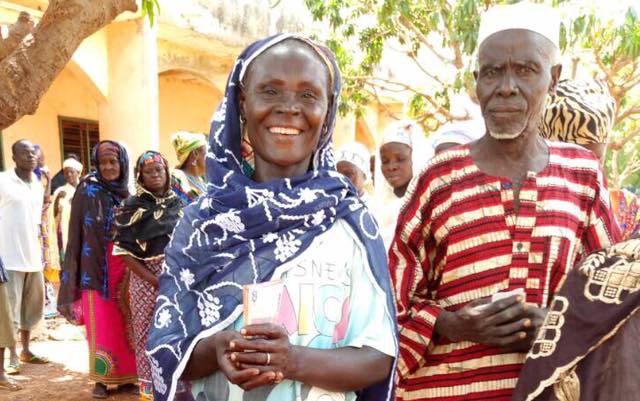Cash transfers have been shown to reduce poverty, increase food security and build households assets, cultivate human capital, and provide recipients with dignity and autonomy. Research from Bangladesh and other low- and middle-income settings also shows that cash transfers can reduce intimate partner violence.
Despite these findings, critics make a set of familiar arguments—ones often used against other social protection programs—to cast doubt on the efficacy of cash transfers.
They cite anecdotal evidence that cash transfer beneficiaries do not use the money wisely. Recipients spend it on alcohol or tobacco, the argument goes, or become dependent on the transfers, failing to improve their financial standing in order to stay in the program. Critics also express doubts about program costs and suggest some households may end up having more children in order to receive more cash.
These narratives influence public perceptions and can play an important role in the political and social acceptability of financing, piloting, and scaling up cash transfer programs. But do such anecdotal critiques really reflect systematic behavior by program recipients? A recent analysis co-authored by researchers at IFPRI, and conducted in collaboration with the Transfer Project, summarizes evidence from seven countries in Africa south of the Sahara that debunks these six common perceptions about government-run unconditional cash transfers.
MYTH 1: Transfers encourage higher spending on alcohol and tobacco
“…If they give it to the man, he goes out and finds some friends and they drink.”
BUSTED: The evidence suggests cash transfers do not increase alcohol and tobacco consumption. In fact, smoking and drinking often go hand-in-hand with the poor mental health, stress, and desperation associated with poverty. Cash transfers decrease poverty, and so it is possible that recipients may be less drawn to those temptations. In Lesotho, for instance, transfers resulted in lower spending on alcohol and tobacco while significantly increasing spending on food. Cash transfers have demonstrated nutritional benefits, improving food security, dietary diversity, and consumption; this result also suggests that transfer income could be spent differently, more intentionally, than other income.
MYTH #2: Transfers are fully consumed rather than invested
“Cash is a handout or charity…”
BUSTED: Cash transfers are considered investments if they help maintain a household’s productive activities and improve children’s nutrition, learning capacity, and overall human capital. Most beneficiary households depend on their own efforts in smallholder agriculture or family-run businesses to assure enough income and food for survival. The study broke these efforts down into productivity indicators including livestock ownership, ownership of agricultural assets, and agricultural inputs/outputs. Evaluations showed that cash transfers had significant, positive impacts on at least one productive indicator in each of the seven countries that were studied. In addition, focusing on secondary-age school enrollment and dropout rates shows that cash transfers have a positive, significant impact on human capital investment, as cash increased enrollment rates in Ghana, Kenya, Lesotho, Malawi, and Zambia.
MYTH #3: Cash creates dependency, reducing participation in productive work
“Poor families who receive financial support will work less and become lazy.”
BUSTED: Research does not support the hypothesis that cash transfers discourage work or have a net negative impact on labor supply. However, findings suggest cash affects household decision-making on labor allocation—recipients may switch their income generating activities, or alter the balance between labor, household domestic tasks and leisure. Overall, however, beneficiaries reported having more flexibility regarding when to resort to agricultural wage labor, increasing their autonomy over productive activities and how they allocate their time.
MYTH #4: Transfers targeted to households with young children will increase fertility
“Increasing fertility to obtain more benefits or maintain eligibility…”
BUSTED: Cash benefits including childcare support, tax credits, and paid leave are popular pro-natal policies worldwide; yet there has been no research evidence showing that women increase fertility to re-qualify for the unconditional cash transfers examined. In fact, research in Kenya found that females between the ages of 12 and 24 who lived in households receiving cash transfers were five percentage points more likely to delay their first pregnancy. In South Africa, childbearing decreased by 10.5 percentage points among those under 21. Existing evidence actually shows that cash transfers increase the birth spacing among women, particularly among the youth population.
MYTH #5: Transfers will lead to negative community-level economic impacts
“Handing out cash creates price distortion and inflation.”
BUSTED: Evidence from across Africa south of the Sahara shows that cash transfer programs do not lead to price inflation or distortion in covered communities. This is because of three factors: Programs typically cover only about 20 percent of community households; beneficiaries are comparatively the poorest households, so that collectively the transfers represent a small injection to total community cash flows; and finally, enough market interconnectivity exists even in rural areas to not limit producers’ ability to meet increases in demand.
MYTH #6: Cash transfers at scale are not fiscally sustainable
“Programs are too costly to maintain over the medium-or longer-term.”
BUSTED: Cash transfers are, in fact, relatively inexpensive—feasible at scale as a percentage of current spending and GDP and fully within the cost considerations of any national government. Costing studies carried out for the Transfer Project showed just how affordable these programs are. In Lesotho, cash transfers accounted for 0.2 percent of GDP; in Zambia, 0.06 percent of GDP. Cash transfers make up a small sliver of government spending compared to cost of other programs—school meals, public works, and other nutrition or in-kind spending.
These myths present a distorted picture of how cash transfers actually work and ignore their benefits. If such flawed assumptions are used to inform policy debates and decisions, the price—in lost improvements in well-being and livelihood among the poor in developing countries and globally—may be high. Policy makers should look to the growing body of evidence showing the array of positive impacts of cash transfers for the most vulnerable, achieved at a relatively low cost.
Maxwell Young is an IFPRI Communications Specialist.







